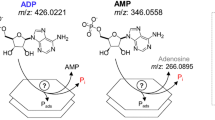Abstract
Formulas calculated from modern analyses of vermiculites and hydrobiotites show that these minerals resemble phlogopites and magnesian biotites in tetrahedral and octahedral layer composition, but usually have a higher proportion of trivalent octahedral cations. None of the formulas studied resembles those of ferroan biotites in composition.
In a few formulas the negative layer unit charge and the neutralizing positive interlayer charge are as high as those found in phlogopite; about 1.00 in the half-cell formula, but in most vermiculite formulas the charge on the layer unit and the interlayer charge are considerably lower than in phlogopite. Such a decrease in the amount of these charges may be due to oxidation of Fe2+ to Fe3+, which would increase the positive octahedral charge, and, consequently, decrease the layer unit charge. Oxidation of Fe2+ to Fe3+ also explains the higher proportion of trivalent octahedral cations in vermiculites and hydrobiotites.
Few papers furnish both cation exchange data and analyses of the samples studied; consequently it is difficult to correlate interlayer charge and cation exchange capacity, but empirically the interlayer charge multiplied by 200 yields a value that approximates the cation exchange capacity, provided the Mg has been allotted correctly between octahedral and interlayer positions.
On the basis of composition and charge relations, vermiculites may be interpreted as formed from phlogopites or magnesian biotites by replacement of K by Mg.
Similar content being viewed by others
References
Barshad, Isaac (1948) Vermiculite and its relation to biotite as revealed by base exchange reactions, X-ray analyses, differential thermal curves, and water content: Amer. Min., v. 33, pp. 655–678.
Foster, M. D. (1960) Interpretation of the composition of trioctahedral micas: U.S. Geol. Survey Prof. Paper 354-B, pp. 11–49.
Gevers, T. W. (1949) Vermiculite at Loolekop, Northeast Transvaal: Geol. Soc. South Africa Trans., v. 51, pp. 133–173.
Gruner, J. W. (1934) The structures of vermiculites and their collapse by dehydration: Amer. Min., v. 19, pp. 557–575.
Kanzantzev, V. P. (1934) On the structure and properties of vermiculite: Mem. Soc. Russe Min., ser. 2, v. 63, pp. 464–480.
Roy, Bustum, and Romo, L. A. (1957) Weathering studies. 1. New data on vermiculite: J. Geol., v. 65, pp. 603–610.
Walker, G. F. (1950) Trioctahedral minerals in the soil-clays of north-east Scotland: Min. Mag., v. 29, pp. 72–84.
Author information
Authors and Affiliations
Additional information
Publication authorized by the Director, U.S. Geological Survey.
Rights and permissions
About this article
Cite this article
Foster, M.D. Interpretation of the Composition of Vermiculites and Hydrobiotites. Clays Clay Miner. 10, 70–89 (1961). https://doi.org/10.1346/CCMN.1961.0100107
Published:
Issue Date:
DOI: https://doi.org/10.1346/CCMN.1961.0100107




